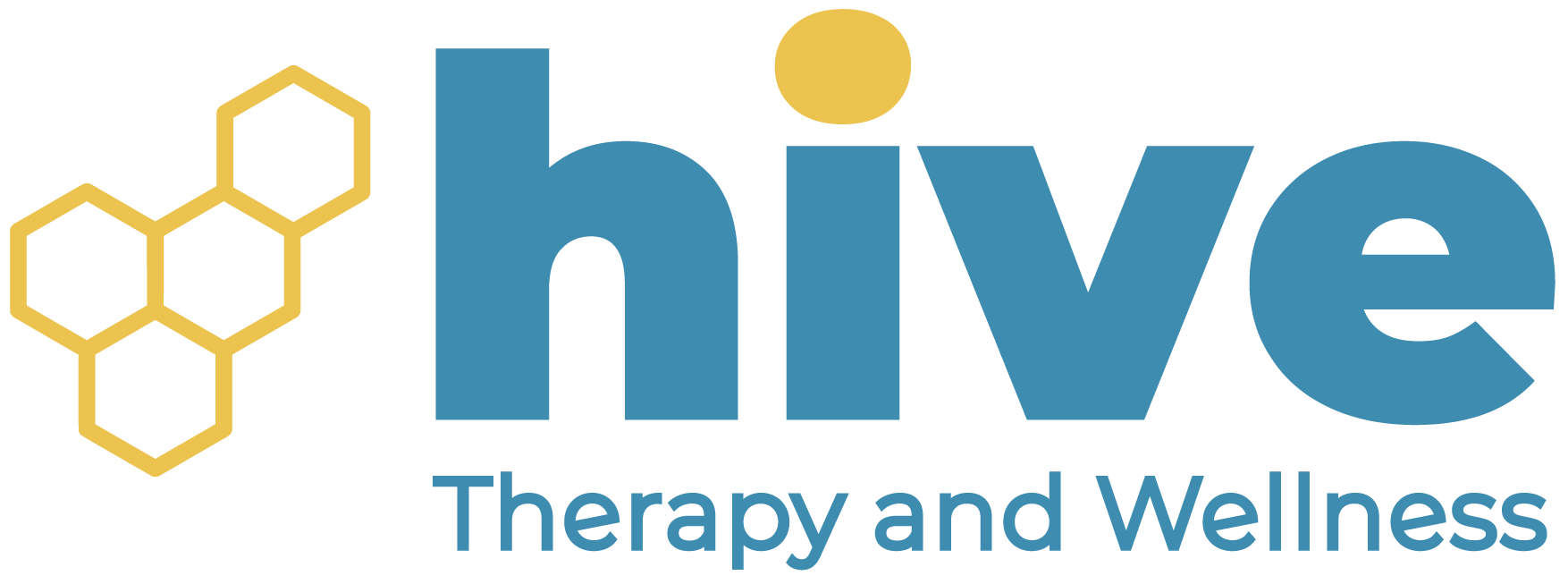Postpartum Recovery
Move Better. Live Fuller. Your Wellness Journey Starts Here.
Schedule a FREE Discovery Call!
What Is Postpartum Recovery?
Postpartum recovery is the period of healing immediately following childbirth (no matter if you deliver vaginally or via c-section). It is a critical recovery period for your body that should not be overlooked.
This recovery period is not just from the labor process but also from the pregnancy itself. While pregnant, your body spends many months carrying an ever-changing and growing weight inside your body while experiencing hormonal and structural changes.
Even after the childbirth process is over, your body will be very different. Your entire body worked hard to support your baby, making many shifts to allow for proper fetal development and nutrition.

Because of these changes and the trauma of childbirth, your body—including your pelvic floor—will need ample time and guidance from a professional to heal. Your pelvic floor is a group of muscles that control many functions, including bowel and bladder function, sexual appreciation, support of your pelvic organs, and support of your back and hips.
During pregnancy, the pelvic floor experiences a lot of strain from the growing weight of the baby and the postural shifts your body makes. Regardless of the type of birth you experience, the pelvic floor is affected. Let’s talk about how:
- In the case of a vaginal birth, the baby passes through muscles of the pelvic floor, which must stretch to accommodate this process. This causes stress, and in some instances, damage to these muscles.
- If you have a c-section, this directly affects your abdominal muscles. However, the pelvic floor and the abdomen are connected, so while the pelvic floor muscles are not directly affected, they still are impacted in this type of birth.
Furthermore, when thinking of postpartum recovery, it is necessary to take a more global approach for the patient—because pregnancy literally affects every system in the body. Following delivery, from a structural standpoint, the diaphragm, rib cage, abdomen, spine, pelvis, hips and pelvic floor are all connected, no matter how the baby arrives! Pregnancy and childbirth can affect you in ways you may not have even expected.
Because of the effects of pregnancy and childbirth, many people experience pelvic floor dysfunction as a result. Dysfunction of the pelvic floor during postpartum recovery can lead to a range of challenging symptoms, including the following:
- Perineal soreness or pain (as a result of stress, tearing, or, in some cases, episiotomy)
- Incontinence (bladder or bowel)
- Constipation
- Painful sex
- General pain (in the pelvis, back, hips, and more)
- Hemorrhoids
- Prolapse
- Diastasis recti (a separation/bulging of the abdominal muscles)
While it may take time for your body to return to normal and for these symptoms to ease, they won’t just disappear on their own. In most cases, the body will need some help during postpartum recovery. This can seem like just another confusing thing to add to your list of new responsibilities as a parent, but it doesn’t have to be stressful. Seeking the guidance of a professional can make the process much smoother and easier to understand. This support can help you know what to expect, why your body has these changes, and how exactly to address these problems!
Why is Postpartum Recovery Important?
Although in many cases people who give birth are expected by society to simply “bounce back” or even get back to work in a very short time after experiencing childbirth, that really doesn’t align with the needs of your body. The body needs time to recover, and it is very important to watch over your healing process and address any immediate or lingering problems.
Many folks assume symptoms such as incontinence (such as leaking a little while coughing or laughing) is just a given after giving birth. While it is very common for people to experience this after giving birth, that does not mean it is normal or something you just have to deal with forever. Addressing these problems early when they are noticed during postpartum recovery can better maintain not only the health of your body, but also your quality of life.
There’s no reason to just “deal with” worries about leakage while you work, attend social events, or chase your little one. Body pains are no joke either, and leaving problems like constipation or prolapse to solve themselves simply won’t work. In fact, these symptoms can cause even more issues in the long run if they are not addressed. Therefore, it is highly recommended to work with a pelvic floor physical therapist.
Physical Therapy for Postpartum Recovery
For many postpartum symptoms involving the pelvic floor and even other parts of the body (hips, back, core and more), physical therapy can be very necessary and helpful. Physical therapy can encourage a smoother, less stressful postpartum recovery. It can even prepare you for a better recovery by evaluating your pelvic floor health before and during pregnancy.
Pelvic floor physical therapy can encourage healing for your pelvic floor and return it to normal function. This can involve practice and training of the pelvic floor to address weakness, tightness, or discoordination. Regaining control, awareness, and understanding of your pelvic floor can improve symptoms mentioned earlier, such as incontinence, constipation, or painful sex. Additionally, your physical therapist can suggest behavioral modifications during your treatment, which can teach you appropriate lifting posture and safer exercise activities during your postpartum recovery.
For those experiencing diastasis recti after childbirth, physical therapy offers an effective and valuable approach to restoring the abdominal muscles to their normal position and function. Your physical therapist can guide you through safe massage techniques, pressure management strategies, and exercises to promote healing of the abdominal separation. They will identify exercises and movements to avoid, and show you how to self-monitor to prevent worsening of the condition.
Physical therapy is highly effective for addressing the lingering effects of pregnancy and childbirth, such as body pain or stiffness. Manual therapies and other treatments can significantly relieve these discomforts. Your physical therapist will also guide you in safely returning to activities and exercises during your postpartum recovery, helping you avoid actions that could inadvertently worsen your symptoms.
In some cases, symptoms of pelvic floor dysfunction can be hard to recognize immediately after childbirth, as your body may feel or look different. Often, challenges are expected right after delivery. However, they should get better and entirely disappear within a few weeks. Regardless, it can be advantageous to work with a pelvic floor therapist immediately following delivery, so that complications can be identified immediately and quickly addressed. Even if you cannot get in right away, there is no better time to start than the present, whether you are a few days post delivery or many years.
The physical therapists at Hive Therapy and Wellness are highly trained, knowledgeable, and passionate about helping patients return to a better quality of life. If you are looking to prepare your body for pregnancy or recover more effectively after childbirth, they can provide a variety of treatments catered to your unique needs. Some treatments you can expect from our physical therapists during postpartum recovery include:
- Neuromuscular re-education
- Manual therapy
- Exercise prescription
- Dry needling
- Cupping
- Behavioral modifications
- Therapeutic activities
- Electrical muscle stimulation
- Spinal manipulation
Postpartum recovery is the period of healing immediately following childbirth (no matter if you deliver vaginally or via c-section). It is a critical recovery period for your body that should not be overlooked.
This recovery period is not just from the labor process but also from the pregnancy itself. While pregnant, your body spends many months carrying an ever-changing and growing weight inside your body while experiencing hormonal and structural changes.
Even after the childbirth process is over, your body will be very different. Your entire body worked hard to support your baby, making many shifts to allow for proper fetal development and nutrition.
Because of these changes and the trauma of childbirth, your body—including your pelvic floor—will need ample time and guidance from a professional to heal.
Your pelvic floor is a group of muscles that control many functions, including bowel and bladder function, sexual appreciation, support of your pelvic organs, and support of your back and hips.
During pregnancy, the pelvic floor experiences a lot of strain from the growing weight of the baby and the postural shifts your body makes. Regardless of the type of birth you experience, the pelvic floor is affected. Let’s talk about how:
- In the case of a vaginal birth, the baby passes through muscles of the pelvic floor, which must stretch to accommodate this process. This causes stress, and in some instances, damage to these muscles.
- If you have a c-section, this directly affects your abdominal muscles. However, the pelvic floor and the abdomen are connected, so while the pelvic floor muscles are not directly affected, they still are impacted in this type of birth.
Furthermore, when thinking of postpartum recovery, it is necessary to take a more global approach for the patient—because pregnancy literally affects every system in the body.
Following delivery, from a structural standpoint, the diaphragm, rib cage, abdomen, spine, pelvis, hips and pelvic floor are all connected, no matter how the baby arrives! Pregnancy and childbirth can affect you in ways you may not have even expected.
Because of the effects of pregnancy and childbirth, many people experience pelvic floor dysfunction as a result. Dysfunction of the pelvic floor during postpartum recovery can lead to a range of challenging symptoms, including the following:
- Perineal soreness or pain (as a result of stress, tearing, or, in some cases, episiotomy)
- Incontinence (bladder or bowel)
- Constipation
- Painful sex
- General pain (in the pelvis, back, hips, and more)
- Hemorrhoids
- Prolapse
- Diastasis recti (a separation/bulging of the abdominal muscles)
While it may take time for your body to return to normal and for these symptoms to ease, they won’t just disappear on their own. In most cases, the body will need some help during postpartum recovery.
This can seem like just another confusing thing to add to your list of new responsibilities as a parent, but it doesn’t have to be stressful.
Seeking the guidance of a professional can make the process much smoother and easier to understand. This support can help you know what to expect, why your body has these changes, and how exactly to address these problems!
Although in many cases people who give birth are expected by society to simply “bounce back” or even get back to work in a very short time after experiencing childbirth, that really doesn’t align with the needs of your body.
The body needs time to recover, and it is very important to watch over your healing process and address any immediate or lingering problems.
Many folks assume symptoms such as incontinence (such as leaking a little while coughing or laughing) is just a given after giving birth. While it is very common for people to experience this after giving birth, that does not mean it is normal or something you just have to deal with forever.
Addressing these problems early when they are noticed during postpartum recovery can better maintain not only the health of your body, but also your quality of life.
There’s no reason to just “deal with” worries about leakage while you work, attend social events, or chase your little one.
Body pains are no joke either, and leaving problems like constipation or prolapse to solve themselves simply won’t work.
In fact, these symptoms can cause even more issues in the long run if they are not addressed. Therefore, it is highly recommended to work with a pelvic floor physical therapist.
For many postpartum symptoms involving the pelvic floor and even other parts of the body (hips, back, core and more), physical therapy can be very necessary and helpful.
Physical therapy can encourage a smoother, less stressful postpartum recovery. It can even prepare you for a better recovery by evaluating your pelvic floor health before and during pregnancy.
Pelvic floor physical therapy can encourage healing for your pelvic floor and return it to normal function. This can involve practice and training of the pelvic floor to address weakness, tightness, or discoordination.
Regaining control, awareness, and understanding of your pelvic floor can improve symptoms mentioned earlier, such as incontinence, constipation, or painful sex.
Additionally, your physical therapist can suggest behavioral modifications during your treatment, which can teach you appropriate lifting posture and safer exercise activities during your postpartum recovery.
For those experiencing diastasis recti after childbirth, physical therapy offers an effective and valuable approach to restoring the abdominal muscles to their normal position and function.
Your physical therapist can guide you through safe massage techniques, pressure management strategies, and exercises to promote healing of the abdominal separation.
They will help you identify exercises and movements to avoid, and show you how to self-monitor to prevent worsening of the condition.
Physical therapy is highly effective for addressing the lingering effects of pregnancy and childbirth, such as body pain or stiffness. Manual therapies and other treatments can significantly relieve these discomforts.
Your physical therapist will also guide you in safely returning to activities and exercises during your postpartum recovery, helping you avoid actions that could inadvertently worsen your symptoms.
In some cases, symptoms of pelvic floor dysfunction can be hard to recognize immediately after childbirth, as your body may feel or look different. Often, challenges are expected right after delivery. However, they should get better and entirely disappear within a few weeks.
Regardless, it can be advantageous to work with a pelvic floor therapist immediately following delivery, so that complications can be identified immediately and quickly addressed.
Even if you cannot get in right away, there is no better time to start than the present, whether you are a few days post delivery or many years.
The physical therapists at Hive Therapy and Wellness are highly trained, knowledgeable, and passionate about helping patients return to a better quality of life.
If you are looking to prepare your body for pregnancy or recover more effectively after childbirth, they can provide a variety of treatments catered to your unique needs.
Some treatments you can expect from our physical therapists during postpartum recovery include:
- Neuromuscular re-education
- Manual therapy
- Exercise prescription
- Dry needling
- Cupping
- Behavioral modifications
- Therapeutic activities
- Electrical muscle stimulation
- Spinal manipulation
You can learn more about these treatments on our Treatments Page.





